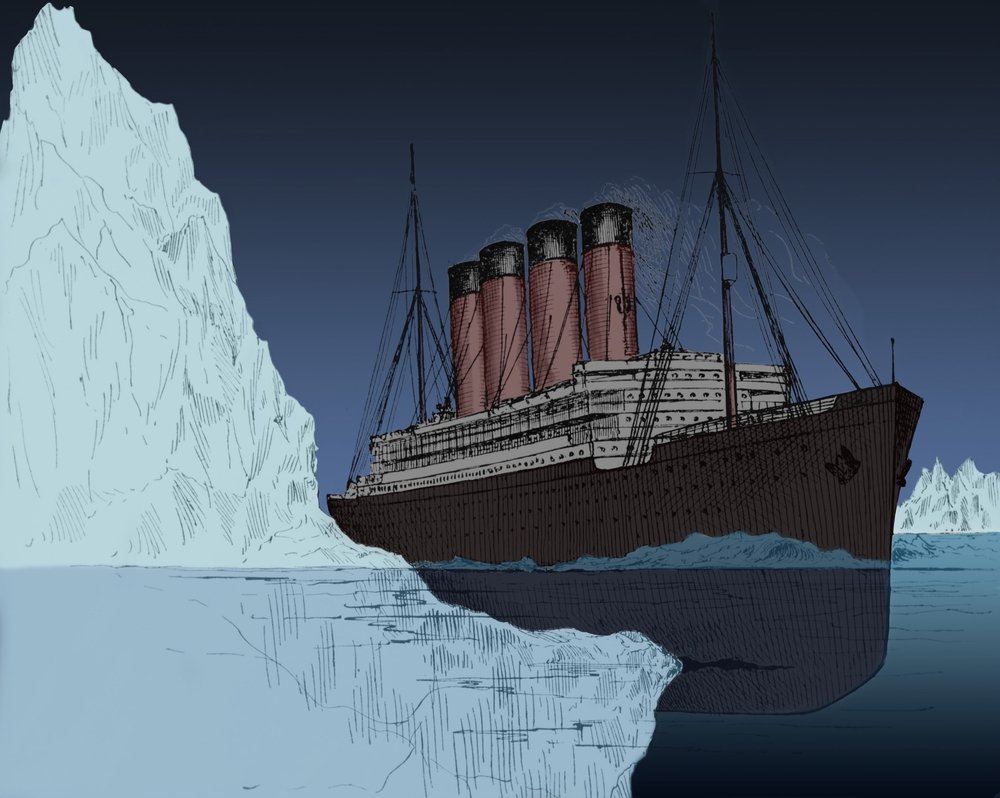
"It still looked large to the people on the ship, but it had melted quite a bit," Bigg said.Įmail Becky Oskin or follow her.

By April, the floating chunk was just 325-foot (100 meters) wide. The iceberg was originally 1,640 feet (500 m) wide and 985 feet (300 m) high, the model indicates. This 'berg likely sailed directly southwest toward southern Labrador and Newfoundland, rather than heading north up the Greenland coast into Baffin Bay and circling around via the Labrador Current, as other models have suggested, Bigg said. Wood of SS Etonian set to fetch 12,000 at auction this week. Historic photograph of the 'Titanic iceberg' captured by Captain W. The picture of the iceberg is now being auctioned by Henry Aldridge and Son Ltd on June 20 for 15,000.

Wood, who served on board the SS Etonian. The model showed that the deadly 1912 iceberg probably originated from southern Greenland in late summer or early autumn of 1911. The picture was reportedly taken by Captain W. Coast Guard Historian's Office)īigg and Wilton also created a computer model to plot the likely path of icebergs discharged from Greenland's glaciers. "Greenland's contribution to sea level rise is increasing."Ī purported photo of the iceberg that sank the Titanic. "The values are now twice as high as the largest values from earlier in the century," Bigg said. Between 19, five years saw more icebergs below the 48th parallel than in 1912. The berg scraped along the starboard or right side of the hull below the waterline, slicing open the hull between five of the adjacent watertight compartments. Between 19, five years saw at least 700 icebergs drift below 48 degrees north, where they could menace ships.īigg said the broader study indicates climate change has increased the risk of icebergs for ships sailing near Greenland in recent decades. Description (Brief) Titanic struck a North Atlantic iceberg at 11:40 PM in the evening of 14 April 1912 at a speed of 20.5 knots (23.6 MPH). The Coast Guard records show a slightly higher number of 1,041 icebergs crossed south of 48 degrees north in 1909. In 1912, data shows that 1,038 icebergs moved south from Arctic waters, and crossed the 48th parallel. Coast Guard's International Ice Patrol extending back to 1900.Īccording to Bigg, 1912 was a high ice year, but not exceptional compared with the surrounding decades. They are studying data collected by the U.S. The researchers are tracking icebergs over time to test Greenland's response to climate change and the contribution to sea level rise from icebergs. The new results come from a broader examination of Greenland icebergs by Bigg and study co-author David Wilton, also from the University of Sheffield. The research was published today (April 10) in the journal Weather. "This really refutes the arguments that have been around about things like high tides or sunspots generating excessive numbers of icebergs in that year," Bigg told Live Science. Gamble, Commanding Officer of the USCGC SENECA.But the new findings contradict these earlier theories. Captain De Carteret gave the print to Captain A. Therefore, it is assumed that this is the iceberg that the TITANIC struck. During this operation, the MINIA found debris and bodies floating in the vicinity of the above iceberg. It was dispatched after the Western Union Cable ship MACKAY BENNET by White Star Lines to recover debris from the Titanic. The MINIA was one of the first ships to reach the scene following the disaster. This print was in possession of Captain De Carteret, the Captain of the Cable ship MINIA, reportedly stated that this was the only iceberg near the scene of the collision. This is a scanned copy of the photographic print of the iceberg with which the RMS TITANIC supposedly collided on Apat latitude 41-46N, longitude 50-14W.

Curators at the USCG provide this description: Coast Guard, Department of Homeland Security, maintains this photo. The Captain noted paint markings on the iceberg, making it the likely iceberg which came into contact with the RMS Titanic. This image depicts a photograph, taken by Captain De Carteret of the Minia, who indicated that this iceberg was the only one in the area when his ship arrived after Titanic sank.


 0 kommentar(er)
0 kommentar(er)
